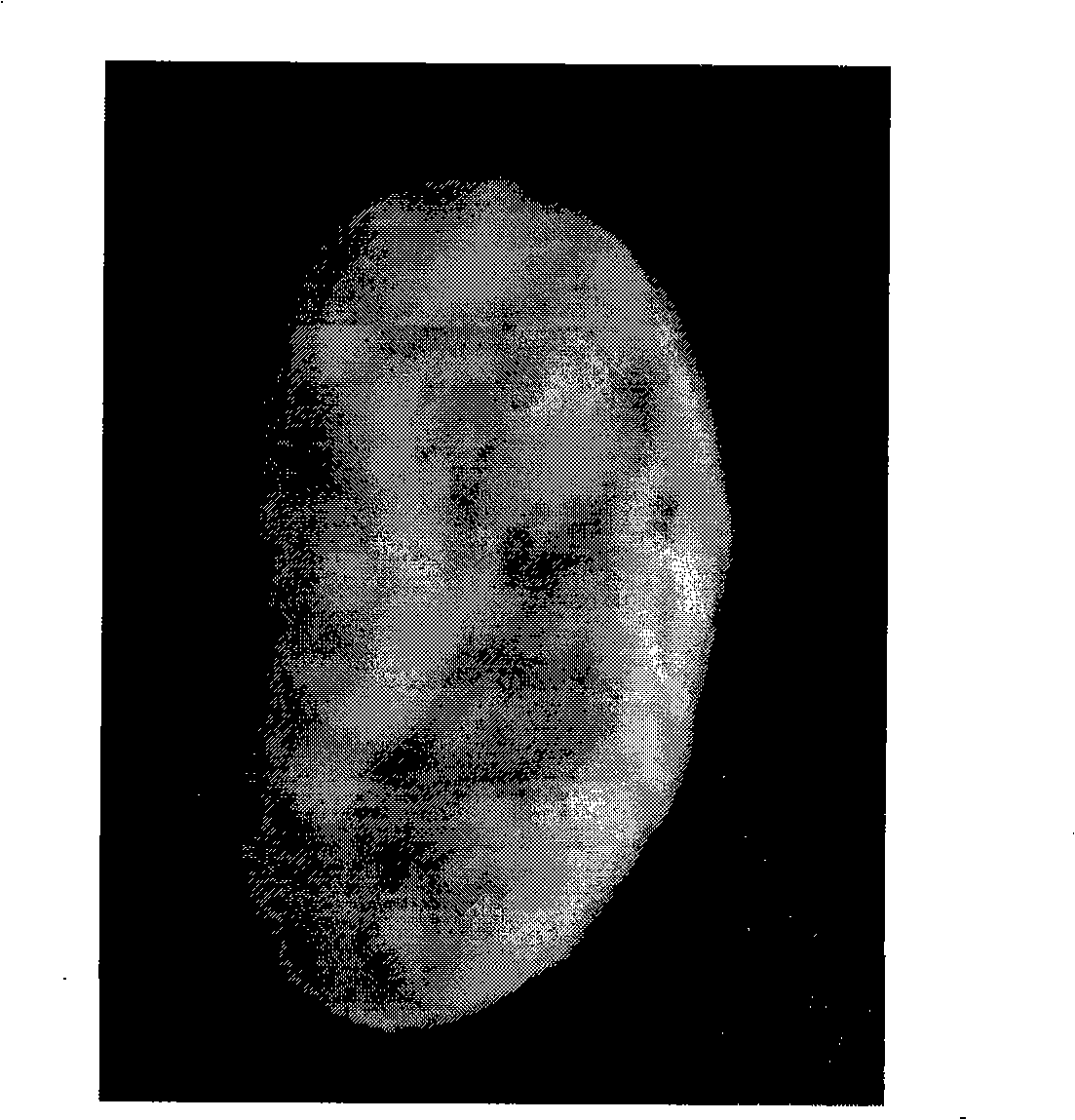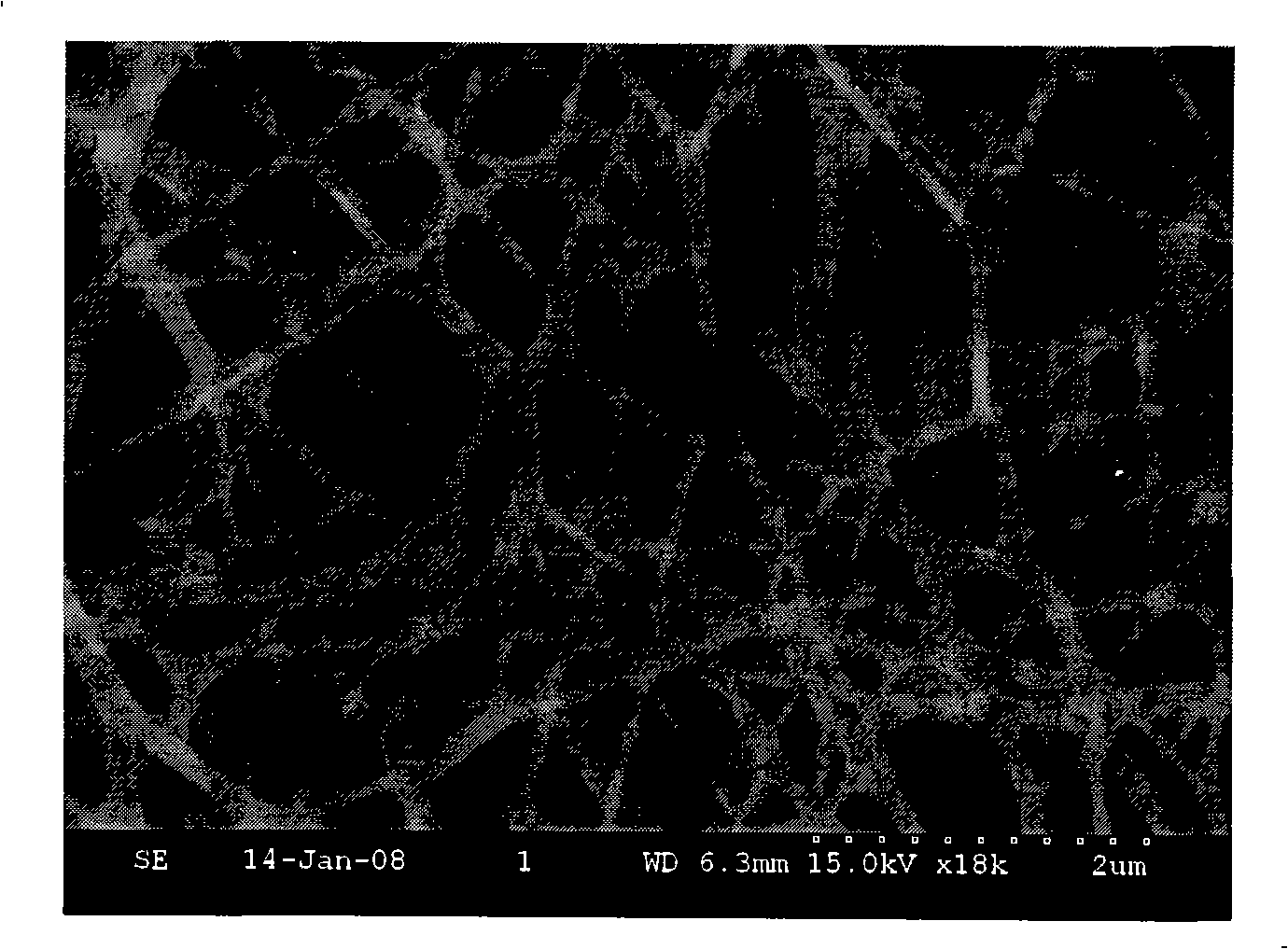Polycaprolactone/polyethyleneglycol tissue engineering bracket material and preparation method thereof
A tissue engineering scaffold, polyethylene glycol technology, used in medical science, prosthesis, bone implants, etc., can solve the problem of no similar or similar patent reports, and achieve good mechanical properties, high porosity, and pore size. adjustable effects
- Summary
- Abstract
- Description
- Claims
- Application Information
AI Technical Summary
Problems solved by technology
Method used
Image
Examples
Embodiment 1
[0027] Using tetrahydrofuran as a co-solvent, polymer PCL with a molecular weight of 50,000 and a melting point of 58-60°C, and a polymer PEG with an average molecular weight of 1000 and a melting point of 50-54°C in a ratio of 80:20 Dissolve in a co-solvent, stir evenly to make a transparent uniform solution, electrospun to make an electrospun fiber mat, dry it in a vacuum oven, remove the residual solvent, take it out, layer it, and fill it in a mold with a specific shape. The temperature of the vacuum oven was set to 56°C, the mold was placed in the vacuum oven at a constant temperature for 20 minutes, and then taken out. After cooling, the mold was demolded and sterilized by ultraviolet to obtain a tissue engineering scaffold material with a specific shape and good performance. The diameter of the fiber felt measured by scanning electron microscope and Photoshop software is 800±100nm, and the contact angle test shows that the hydrophilicity of the material surface is improved,...
Embodiment 2
[0029] Using a mixed solvent of tetrahydrofuran and ethanol as a co-solvent, a polymer PCL with a molecular weight of 100,000 and a melting point of 58-60°C, and a polymer PEG with an average molecular weight of 2000 and a melting point of 50-54°C at a ratio of 70:30 Dissolve it in a co-solvent, stir it evenly, make a transparent solution, electrospun to make an electrospun fiber mat, dry it in a vacuum oven, take it out, layer it and fill it in a mold with a specific shape, set the vacuum oven temperature The temperature is set at 54°C, the mold is placed in a vacuum oven at a constant temperature for 15 minutes, and then taken out. After cooling, the mold is demolded to obtain a tissue engineering scaffold material with a specific shape and good performance. The diameter of the fiber felt measured by scanning electron microscope and Photoshop software is 300±100nm. The contact angle test shows that the hydrophilicity of the material surface is improved, which preliminarily prove...
Embodiment 3
[0031] Using a mixed solvent of chloroform and methanol as a co-solvent, the polymer PCL with a molecular weight of 1 million and a melting point of 58-60°C, and a polymer PEG with a molecular weight of 2000 and a melting point of 50-54°C in a ratio of 50:50 Dissolve in a co-solvent, stir evenly, make a transparent solution, electrospun to make an electrospun fiber mat, dry it in a vacuum oven, remove the residual solvent, take it out, layer it, and fill it in a mold with a specific shape. The temperature of the vacuum oven is set to 50°C, and the mold is placed in the vacuum oven at a constant temperature for 5 minutes and then taken out. After cooling, the mold is demolded to obtain a tissue engineering scaffold material with a specific shape and good performance. The diameter of the fiber mat measured by scanning electron microscope and Photoshop software is 600±100nm, and the contact angle test shows that the hydrophilicity of the material surface is improved, which preliminar...
PUM
| Property | Measurement | Unit |
|---|---|---|
| Melting point | aaaaa | aaaaa |
| Melting point | aaaaa | aaaaa |
| Diameter | aaaaa | aaaaa |
Abstract
Description
Claims
Application Information
 Login to View More
Login to View More - R&D
- Intellectual Property
- Life Sciences
- Materials
- Tech Scout
- Unparalleled Data Quality
- Higher Quality Content
- 60% Fewer Hallucinations
Browse by: Latest US Patents, China's latest patents, Technical Efficacy Thesaurus, Application Domain, Technology Topic, Popular Technical Reports.
© 2025 PatSnap. All rights reserved.Legal|Privacy policy|Modern Slavery Act Transparency Statement|Sitemap|About US| Contact US: help@patsnap.com


